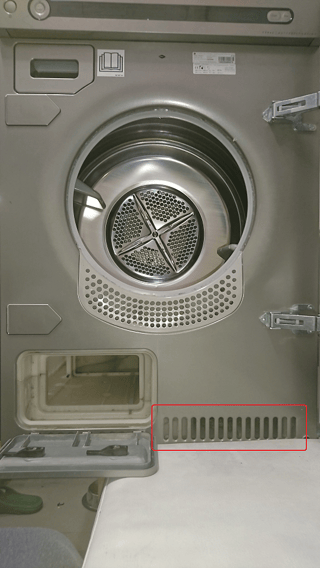I have been having problems with my tumble drier (Asko T794C) thermal protection going out frequently and decided to have a look.
The tumble dryer is a built-in so the air intake is on the front panel:
Upon a closer look into the air intake I found what I thought was a really bad case of lint buildup.
The air duct is a plastic case which is really hard to open without disassembling the whole device, so I made a hook out of a knitting needle and started to pick the lint through the front grate.
Here's what I ended up with after an hour or so of work:
and from the looks of it there's more where it came from:
At this moment I'm worried if it's really lint and not some kind of thermal insulation or something like this.
- It is much more dense than lint usually is. It's almost like felt.
- It looks like it has quite long fibers and sometimes whole pieces of fabric:

- It looks like it's built up in layers of uniform thickness (about 1 cm thick, you can see it on the grate photo).
- It does not seem to block the air stream. When I turn the machine on, I can feel the air coming in alright.
What is this stuff? Should I continue picking it out?
Update:
I found schematics for my machine:
and this stuff seems to be what's left of part 6260:
Any idea what could this be and what could it be used for?





